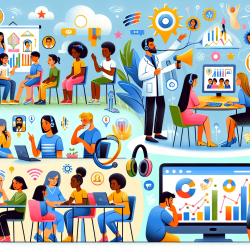Introduction
In the realm of speech-language pathology, the integration of cutting-edge technologies and methodologies can significantly enhance therapeutic outcomes. Recent advancements in quantum dynamics learning present a novel opportunity for speech therapists to refine their approaches, particularly in online therapy settings. This blog explores the implications of the research article "Out-of-distribution generalization for learning quantum dynamics" and its potential application in speech therapy, specifically for children.
Understanding Quantum Dynamics Learning
The study of quantum dynamics involves understanding how quantum systems evolve over time. The research article highlights a breakthrough in out-of-distribution generalization, a concept where models trained on specific data distributions can effectively apply their learning to different, unseen distributions. This is particularly relevant in quantum machine learning (QML), where the ability to generalize across different data sets is crucial.
Implications for Speech Therapy
For speech therapists, especially those utilizing online platforms like TinyEYE, the principles of quantum dynamics learning can be transformative. Here are some potential applications:
- Enhanced Predictive Models: By adopting quantum-inspired models, therapists can develop more accurate predictive tools that adapt to the diverse needs of children, even those who fall outside the typical data distributions.
- Personalized Therapy Plans: Quantum dynamics learning can help in creating personalized therapy plans that consider the unique linguistic and cognitive profiles of each child, leading to more effective interventions.
- Improved Data Utilization: The ability to generalize from limited data sets means therapists can make better use of available data, reducing the need for extensive data collection while still achieving accurate assessments.
Encouraging Further Research
While the current research provides a strong foundation, further exploration is needed to fully integrate these concepts into speech therapy. Practitioners are encouraged to engage with ongoing research and consider collaborative projects that bridge the gap between quantum dynamics and speech-language pathology.
Conclusion
The integration of quantum dynamics learning into speech therapy offers promising avenues for enhancing therapeutic outcomes for children. By leveraging these advanced methodologies, therapists can provide more tailored and effective interventions, ultimately leading to better developmental outcomes.
To read the original research paper, please follow this link: Out-of-distribution generalization for learning quantum dynamics.










